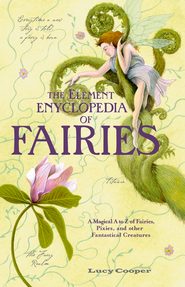
Полная версия:
THE ELEMENT ENCYCLOPEDIA OF FAIRIES: An A-Z of Fairies, Pixies, and other Fantastical Creatures

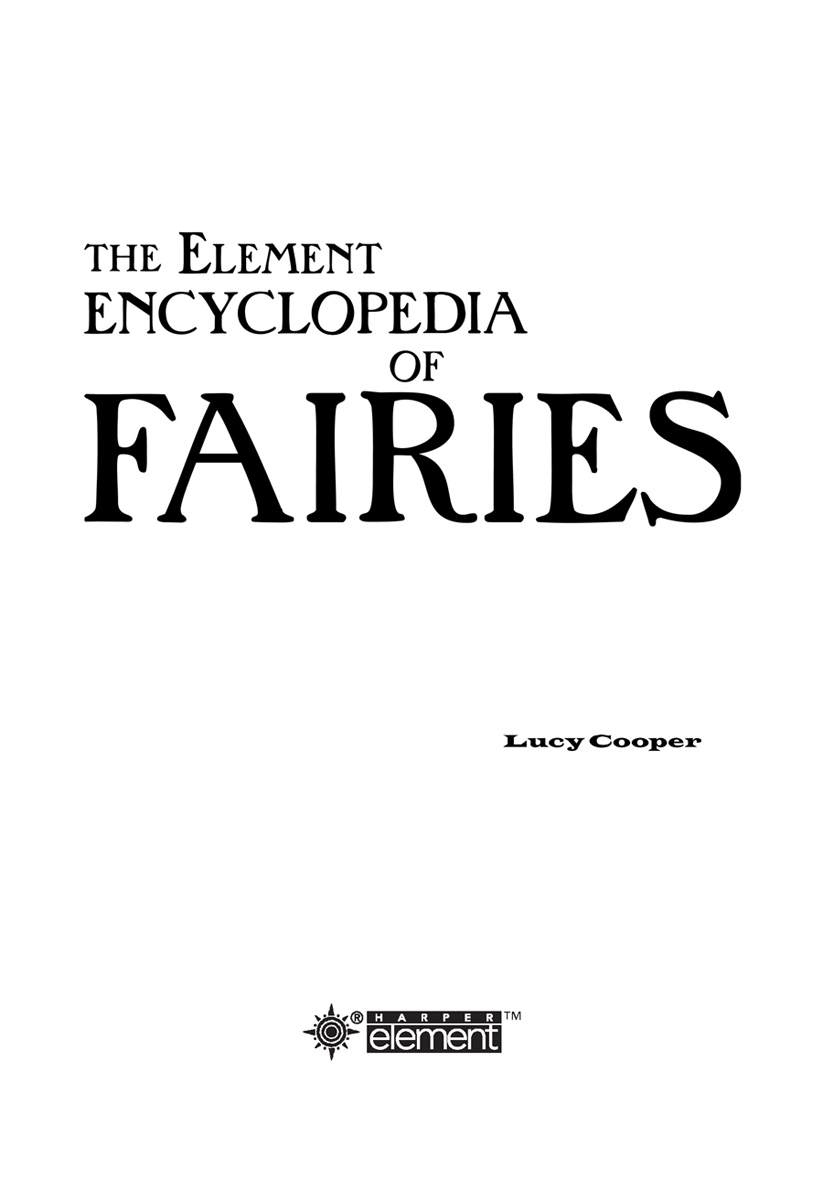
Contents
Cover
Title Page
Copyright
Introduction
What are Fairies?
Where is Fairyland?
A—Abatwa to Aziza
B—Baba Yaga to Bwca
C—Cabyll Ushtey to Cyhyraeth
D—D’Aulnoy, Marie-Catherine to Dzunukwa
E—E Bukura e Dheut to Ezerinis
F—Fachan to Fyglia
Connecting with Fairies
G—Ga-Gaah to Gytrash
H—Habetrot to Hyter Sprites
I—Iansan to It
J—Jack in Irons to Just-halver
K—Kabibonokka to Kumiho
L—Lady of the Lake, the to Lutins
Elementals and Flower Fairies
M—Maahiset to Muse
N—Nab to Nymphs
O—Oakmen to Owl Woman Monster
P—Padfoot to Pwca
Q—Qailertetang to Qutrub
Fairies in Literature and Legend
R—Rå to Rusalka
S—Saci to Syrene
T—Tah-Tah-Kle-Ah to Tylwyth Teg
U—Uncegila to Utukku
V—Valkyries to Vodyanoy
W—Wabun to Wraith
X—Xanthe to Xantho
Y—Yallery Brown to Yunwitsandsdi
Z—Zagaz to Zinkibaru
Selected Bibliography
Acknowledgments
About the Publisher
Introduction
Boggles, Bloody Bones, brownies, black dogs, Shellycoats, barguests, Robin Goodfellows, hags, hobgoblins, dobies, hobthrusts, fetches, kelpies, mumpokers, Pans, sirens, nymphs, imps, incubuses, Kit with the Cansticks, Melsh Dicks, knockers, elves, Rawheads, Padfoots, pixies, dwarves, changelings, redcaps, colt pixies, Tom Thumbs, boggarts, shag foals, brags, wraiths, waffs, gally-trots, Peg Powlers, Pucks, fays, selkies, Cauld Lads, sylphs, nixies, cluricaunes, kobolds, leprechauns, banshees, Lhiannan Shees, Gabriel Ratchets hounds, trows, sprites, and spunkies …
Welcome to the wonderful and diverse world of fairies.
These are just some of the fairy creatures listed in a series of nineteenth-century folklore pamphlets by a Yorkshire tradesman named Michael Denham, later published as The Denham Tracts, edited by James Hardy (London: Folklore Society, 1892–1895).
This snapshot of the fairy realm in the British Isles of the not-so-distant past introduces us to a world in which nursery bogies, such as Bloody Bones, lurked in the cupboard under the stairs, and mischievous pranksters Puck and Robin Goodfellow cavorted in the countryside, likely to transform at any moment into flickering lights and lead unwary travelers on a merry dance through briars, ditches, bogs, and streams. Dobie, the helpful household fairy, lent a hand around the home, while the troublesome boggart delighted in upturning dishes, snatching bread and butter, and teasing members of the household with his tricks.
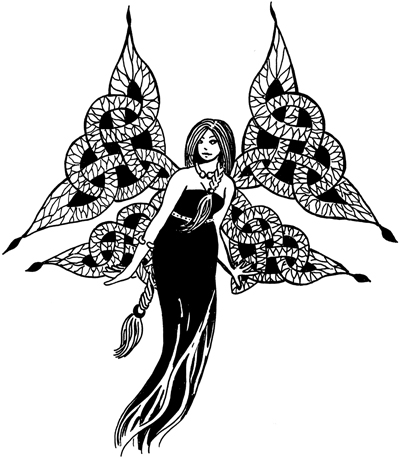
This brief peek into fairyland reveals a colorful cast of denizens, wildly different in appearance and characteristics, before we have even ventured further afield than the British Isles. Fairies have appeared in various guises in cultures around the world since ancient times, from the dryads and nymphs of ancient Greece to the noble Sidhe of Ireland, and from the Australian arawotya to the zinkibaru of Africa. Traditionally, fairies have assumed a number of different roles, as guardians, guides, gatekeepers, muses, and messengers, exerting an influence over human lives that may be by turns benevolent, malevolent, or mischievous, which makes pinning them down to definitions a tricky task.
Toward a Definition
Definitions are slippery things in the fairy world. Hard and fast rules have a habit of bending, blurring, or evaporating into thin air when applied to the capricious denizens of fairyland. The harder you try to pin down a fairy, the more likely it is to wiggle out of your grasp and vanish with a mischievous poke of the tongue.
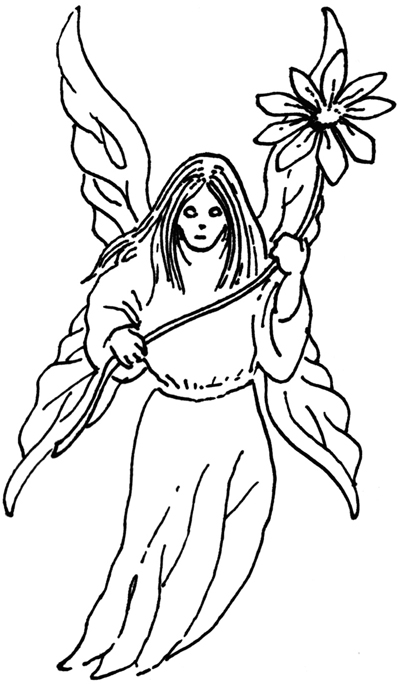
As a rule of thumb, it is generally said that fairies belong to a race of supernatural beings possessing magic powers who sometimes meddle in the affairs of humans.
C. S. Burne, in The Handbook of Folklore (1914), describes fairies as beings somewhere between gods and men, not quite human yet not quite divine. They share the Earth with humans more or less invisibly. They may be messengers for higher powers or operate independently but interact in some way with the lives of humans.
In Native American folk beliefs, every aspect of the natural world is imbued with the universal life force, which goes by many names, including manitou, orenda, and wakanda. Fairies in the form of nature spirits are found in many other cultures, too.
Under these broad definitions we find fairies of all shapes and sizes. The ant-sized abatwa of South Africa are small enough to hide behind a blade of grass, while the Cornish spriggans, generally no taller than a person’s bootlaces, can rapidly increase to the size of giants to frighten away would-be thieves who attempt to steal their treasure. The German household spirit King Goldemar is invisible, but makes his presence known by the touch of his thin, froglike hands.
Shapeshifting is a common fairy attribute, and looks can be deceptive—a wizened old hag is likely to be a beautiful princess in disguise. Swan maidens and selkies transform from human to animal form and have been known to interbreed with humans—though unions between mortals and fairies seldom run smoothly. Other fairies manifest as animals in the shape of cats, dogs, birds, or hybrid creatures, part-human, part-animal, such as mermaids, merrows, and Lamia, or in humanlike form, whether tiny or larger than life.
The denizens of fairyland are eclectic, beautiful, beguiling, and often downright bizarre. The hebu of South America has a glowing posterior and eyebrows so bushy that she must stand on her head if she wishes to look at the sky. The Matshishkapeu, or “Fart Man,” of the Innu people in Canada is the source of much amusement, but also wields great power and serves a serious function in having dominance over animal masters as well as human behavior. In the fairy world, sometimes wisdom is found in the most unlikely of places. Grave seriousness mixes with playfulness and humor.
Already we have glimpsed many fairy creatures and there is hardly a pair of wings in sight. The winged fairies of children’s picture books are a relatively new addition to the fairy world, popularized during the Victorian era. The fairies you will find here are drawn from the folk beliefs of cultures around the world.
Sources
The work of folklorist Katharine Briggs provides a rich store of reference for fairy lore of the British Isles, while Thomas Keightley’s The Fairy Mythology (1828) brings together fairy lore from many different cultures around the world. These, along with many other sources, have provided starting points for investigation. Where possible, the oldest sources of accounts have been tracked down. Material has been drawn from anthropological texts, journals, periodicals, encyclopedias and dictionaries of mythology, collections of folklore, folk tales, superstitions, customs, and letters.
In 1881, the Cornish folklorist Robert Hunt wrote that even then:
… old-world stories were perishing like shadows in the mist before the rising sun. Many wild tales which I heard in 1829 appear to have been lost in 1835 … I drank deeply from the stream of legendary lore which was at that time flowing, as a well of living waters … and longed to renew my acquaintance with the wild tales of Cornwall which had either terrified or amused me as a child.
How many more wild tales from around the globe must have been lost as the old stories were swept away by the march of progress? And yet the fairies are still with us. With a little digging, it is possible to unearth old tales and beliefs. In some places fairies still inhabit the here and now. Elsewhere the stream of legendary lore is buried deep underground and one must dig deep to find it. Yet still it flows.
Inevitably, there is not room here to include the many thousands of denizens of fairyland, and apologies are extended to those who do not appear between these pages. However, it is hoped that the fairies here, representing many cultures around the world, will spark interest for further exploration of the fairy realm.
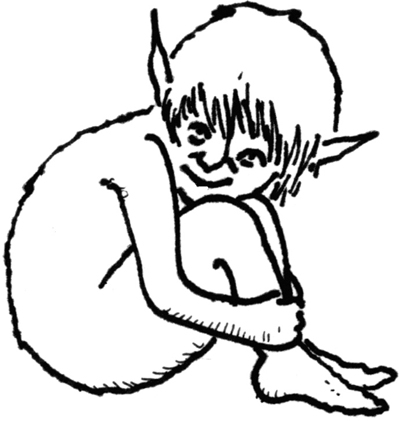
A Note on Spellings
As beliefs have passed down the generations through oral tradition and spread to different locations, fairy names have taken on the dialects of different places. This means there are often many spellings of the same name, none of which is “correct.” Here, effort has been made to list the most commonly used names, along with common alternative spellings.
Using This Book
The A–Z listings contain entries for hundreds and hundreds of individual fairies, alongside some of the folklorists and fairytale collectors, such as the Brothers Grimm, whose work has contributed to what we know about fairy lore today. Words in bold cross-reference related entries, allowing you to hopscotch your way through the world of fairy.
You’ll find more information on specific aspects of fairy lore in the various sections. “What are Fairies?” explores theories on the origins of fairies, from a conquered pygmy race to fallen angels.
Fairyland has always exerted an irresistible pull on humans and “Where is Fairyland?” delves into the realms of fairy. Here you will discover entrances to fairyland, but tread carefully, for the path is often beset with danger, and that glittering pile of fairy gold is likely to turn into a handful of withered leaves in the light of day. Yet those who approach fairyland with a pure heart might be rewarded with a peek behind the veil of the everyday at the curious wonders of the fairy realm.
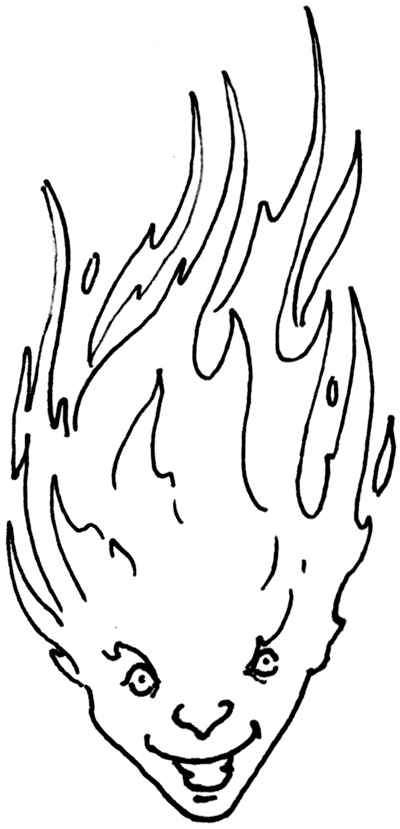
Fairies are well known for their capricious nature. Those wishing to make their acquaintance would be wise to ensure they have a protective piece of iron in their pocket before peering through a self-bored stone or picking a fourleafed clover. “Connecting with Fairies” looks at traditions and customs concerned with seeing fairies—and how to ward off unwanted attention from pernicious or mischievous fairies. Here you will also find tales of fairy encounters, a calendar of the times of year when fairies are at their most active, and information on fairy music and art.
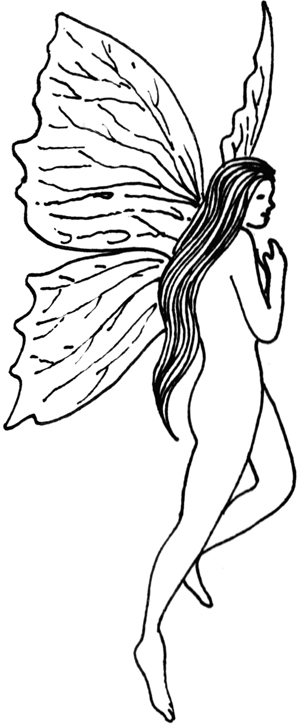
One of the most commonly held beliefs about fairies, still widespread today, is that they are nature spirits, identified with flowers, trees, lakes, rivers, mountains, and other features of the natural landscape. “Elementals and Flower
Fairies” traces ideas about the elements of nature, from the alchemist Paracelsus via the Theosophists to Mary Cicley Barker’s flower fairy illustrations. Here you will find a rich variety of fairies of the earth, water, fire, and air from cultures around the world, as well as flowers and trees of fairy lore.
From larger-than-life magical heroes of Celtic legend to Shakespeare’s Oberon and Titania and J. M. Barrie’s Tinkerbell, fairies have undergone many transformations through the ages. “Fairies in Literature and Legend” takes a look at the changing face of fairies in English literature, from the mouths of storytellers via the quills of poets and playwrights right up to the present, as well as flits through some of the earliest-recorded fairy tales, from The Thousand and One Nights of Arabia to those related in the fashionable French salons.
Are you ready to begin your adventure in fairyland? Pick an entry at random, follow the trail of breadcrumbs, and see where you end up. Be warned, though: many who enter the land of fairy are never quite the same afterward.
After two years immersed in the world of fairies while compiling Italian Folktales (1956), the Italian writer Italo Calvino wrote, “The world about me gradually took on the attributes of fairyland, where everything that happened was a spell or metamorphosis.”
Capricious, amusing, fearsome, and delightful, the topsy-turvy look beyond the surface, to rediscover the magical in the everyday and glimpse the extraordinary in the ordinary. Prepare to venture into the fairy realm, where nothing is ever quite as it seems …
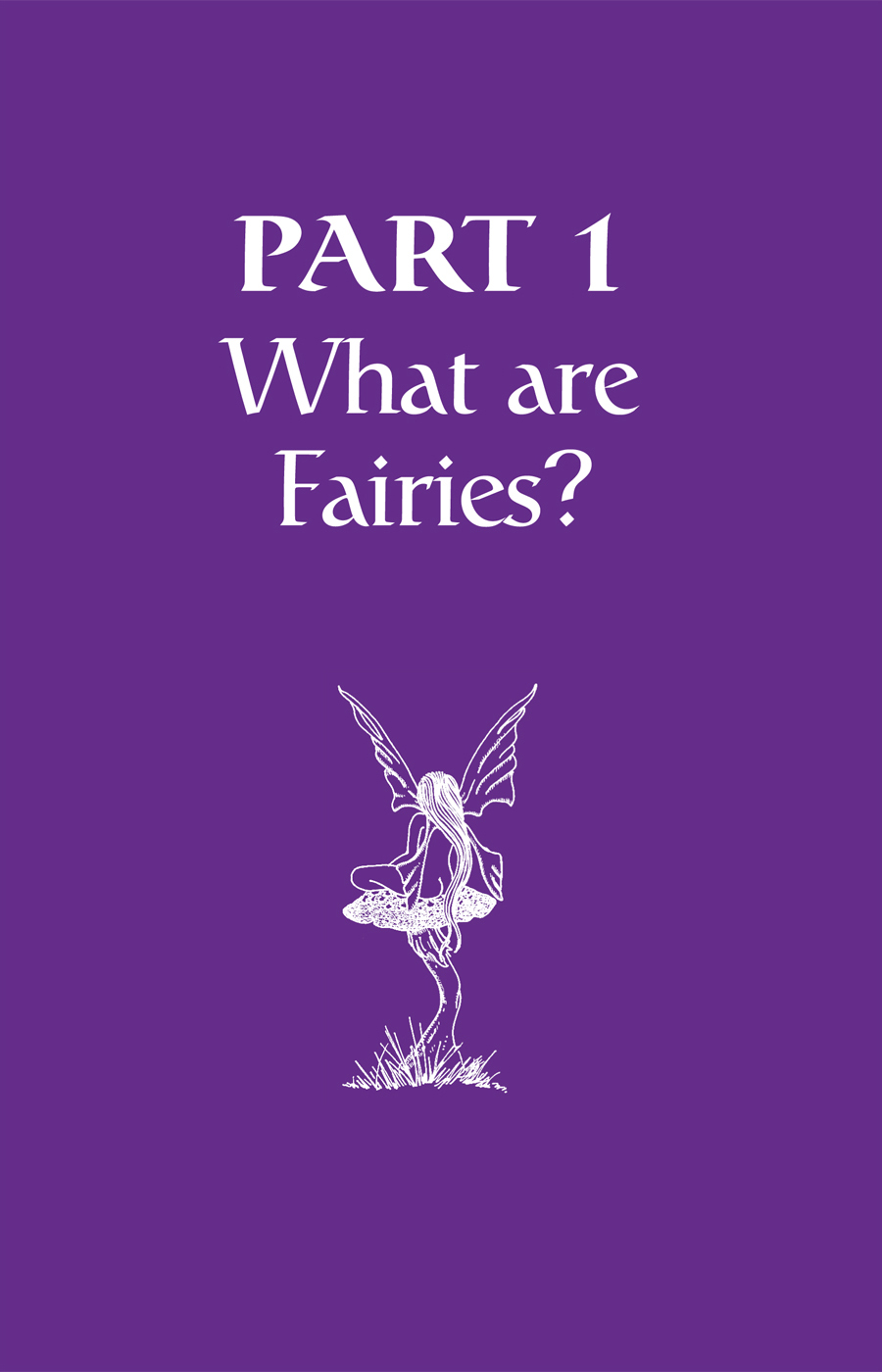
What are Fairies?
Quite simply, the answer to this question will depend on whom you ask. It’s like the story of the lady and the vicar, viewing the moon through a telescope, who see two shapes inclined toward each other. “Methinks,” says the lady, “they are two fond lovers, meeting to pour forth their vows by earth-light.” “Not at all,” says the vicar, taking his turn at the glass, “they are the steeples of two neighboring churches.”
What is seen is often determined by who is doing the looking.
So, what are fairies? Memories of a conquered race of pygmy people? Feared and venerated spirits of ancestors? Remnants of ancient mythology? Nature spirits? Depending on whom you ask, fairies are bound up with all—or none—of these things.
A Pygmy People
Some folklorists and anthropologists, mostly nineteenth-century ones, have suggested that fairy beliefs sprang from memories of conquered races of dwarvish people who lived in caves or mounds and used flint arrows. Stories about fairies, according to this theory, were the result of a clash of cultures. In Britain, this race of small people was conquered by the ancestors of the modern British, who had iron weapons. The conquered people retreated to the hills, or were driven into remote areas such as mountains and swamps, as the larger, more powerful, better-armed race advanced. Some hold this to be why iron is still used as protection against pernicious fairies today.
John Webster, writing in the same era as Shakespeare, expressed a view that was popular at the time:
… fairies are pigmy creatures which really exist in the world, and are and may be still in islands and mountains that are inhabited, and that they are not real daemons. But that either they were truly of the human race, endowed with the use of reason and speech, or, at least, that they were some kind of little apes or satyrs, having their secret and recesses and holes in the mountains.
Jakob Grimm, best known as one half of the Grimm brothers, who famously collected fairy tales throughout Germany and Europe, theorized that once there had been a widespread dwarf population across Europe, which had given rise to many traditions associated with supernatural elves and fairies.
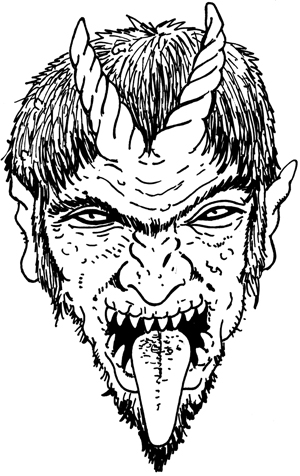
David MacRitchie, a Scottish folklorist and antiquarian, popularized the “pygmy theory” in his controversial book The Testimony of Tradition (1890). In Fians, Fairies and Picts (1893), he used the science of archeology, which was then just developing, to provide evidence for his theory of an ancient dwarflike people. He argued that the Fians, the people preceding the Scots, and the Picts, of Irish and Scottish history, had been skilled in medicine, magic, music, and masonry, and had lived in hidden underground earth houses, which were later known as fairy hills or fairy forts, such as the chambered mounds of Maes-Howe in the Orkneys and New Grange at Boyne in Ireland. The fires that could be glimpsed at night through the tops of their underground dwellings were the “fairy lights” that appeared in folklore across Britain as lights that led humans astray. Stories of women, men, and children taken away by the “fairies” were in fact the result of stealthy raids carried out by the defeated race as acts of retaliation against their oppressors.
This belief was found in other Celtic regions too. In Cornwall around the end of the nineteenth century, the local secretary for the Society of Antiquarians believed the original inhabitants of the area to have been “a strange and separate people” who still lived in the Cornish wilds. Once thought to be witches and wizards, they were, he believed, really the descendants of the Pictish tribes, and thus the Picts had become pixies, or “piskies,” as the Cornish called them.
Spirits of the Dead
W. Y. Evans-Wentz, an American anthropologist and folklorist of Celtic descent who went on to translate The Tibetan Book of the Dead, explored the Celtic lands of Ireland, the Highlands of Scotland, Wales, Cornwall, the Isle of Man, and Brittany at the turn of the nineteenth century, collecting fairy stories, experiences, and beliefs from the people he met. He discovered a strong connection between fairies and the dead.
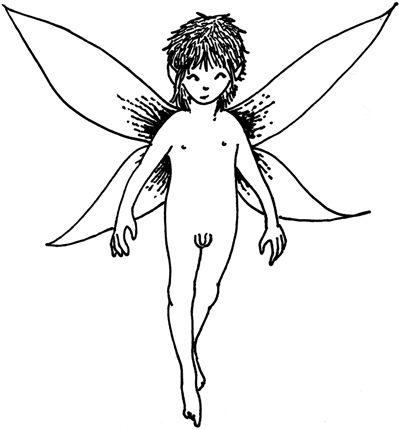
In Ireland, there was a belief that fairies were the spirits of the departed, returning with wisdom, warnings, or messages. The dead of the ancient tribes of Ireland are known as the Gentry. In Wales, the Tylwyth Teg, or Fair Folk, are ancestor spirits, often envisaged as being 6 feet (nearly 2 meters) tall. In Scotland, distinction was made between the Host, or Sluagh, and the Sith (Shee). The Sluagh, “hosts” of the spirit world, are the spirits of mortals who have died. According to one account in Evans-Wentz’ The Fairy-Faith in Celtic Countries (1911), “they fly about in great clouds, up and down the face of the earth like starlings, and come back to the scenes of their earthly transgressions. No soul of them is without the clouds of the earth, dimming the brightness of the works of God, nor can any win heaven, till satisfaction is made for the sins of the earth.” The Sith, literally “people of the hills,” were fairy beings believed to dwell in the hollow hills or fairy mounds of Scotland. They were known as the Sidh, or Daoine Sidh, in Ireland.
Fairy ancestor spirits bestowed flags, banners, and gifts on Scottish clans, such as the famous “fairy banner” of the MacDonalds, the “fairy flag” of the MacLeods of Skye, and the Luck of Edenhall, a glass beaker decorated with enamel, now in the Victoria and Albert Museum, which is said to have been crafted by the fairies and gifted to the Musgrave family of Edenhall in what is now Cumbria. “If this cup shall break, or fall/Farewell the luck of Edenhall” goes the famous saying. As yet, the glass remains intact.
In Cornwall, the story of The Fairy Dwelling of Selena Moor explains that fairies are the spirits of the dead not good enough for heaven, not bad enough for hell. They are shapeshifters and can take the form of beasts or birds, but every time they return to their proper shape, they are a little bit smaller than they were before. Over time, their senses and emotions dull, and they live on the memories of past feelings.
It was said, too [of the Fair Folk], that those who take animal forms get smaller and smaller with every change, till they are finally lost in the earth as muryans (ants) and that they pass winter, for the most part, in underground habitations, entered from cleves or carns. And it is held that many persons who appear to have died entranced are not really dead, but changed into the fairy state.
“The Fairy Dwelling of Selena Moor” in William Bottrell, Traditions and Hearthside Stories of West Cornwall (Vol. II, 1873)
Fallen Angels
Folk and religious beliefs, including beliefs about fairies, became intermingled with the coming of Christianity, and in Carmina Gadelica (1900), a collection of charms, incantations, prayers, poems, and songs from Gaelic-speaking regions of Scotland gathered by folklorist Alexander Carmichael (1832–1912), there is a vivid account of the belief in the Scottish Highlands and Ireland that fairies are fallen angels.
According to this, when the Angel Michael threw the Hosts of Satan out of Heaven, they were followed by an almost endless stream of angels who had been seduced by Satan’s cunning wiles. Seeing that the Shining Hosts of Heaven were rapidly diminishing, the Son cried: “Father, Father, the City is being emptied!” and God raised his hand and the gates of Heaven closed. The seduced angels stopped, bewildered, and remembered themselves. Some had already descended into Hell, and they became demons. But others were in the sky, on the mountains, in the woods, or in the sea, and they became the fairies of the air, the earth, the forests, the seas, and the rivers.
The Hidden People
In Scandinavia, there is a belief that fairies are the hidden children of Eve. The story goes that after the Fall, Adam and Eve settled down and had many children. One day when God was walking through the world He came to call on Eve and asked her to present her children to Him. Caught unawares, she had time to wash only half of them. Ashamed, she sent the unwashed ones to hide and brought out only the ones she thought presentable. But God wasn’t deceived. “Let those who were hidden from me,” He said, “be hidden from all Mankind.” And this was the beginning of the huldre, the “hidden people.”
In another version of the tale, the huldre were the offspring of Adam and his first wife, Lilith.
According to these stories, fairies were not creatures of another order, like angels, but were half human.
Diminished Gods
Some believe that fairies were once important deities, worshiped in pagan times as gods and goddesses of nature. With the coming of Christianity, these spirits were reduced, or tamed, and consequently reduced in stature from powerful beings to the status of folklore.
In Ireland, the Tuatha de Danann were once believed to be the children of the goddess Don, otherworldly beings with supernatural powers. Conquered by the invading Milesians, they took to the hollow hills and became the Daoine Sidh (pronounced Deeny Shee). They battled and mated with the warriors of the Fianna Finn and over the years dwindled in stature. Originally the same size or larger than humans, down through the generations they shrank to the size of children, or smaller.



